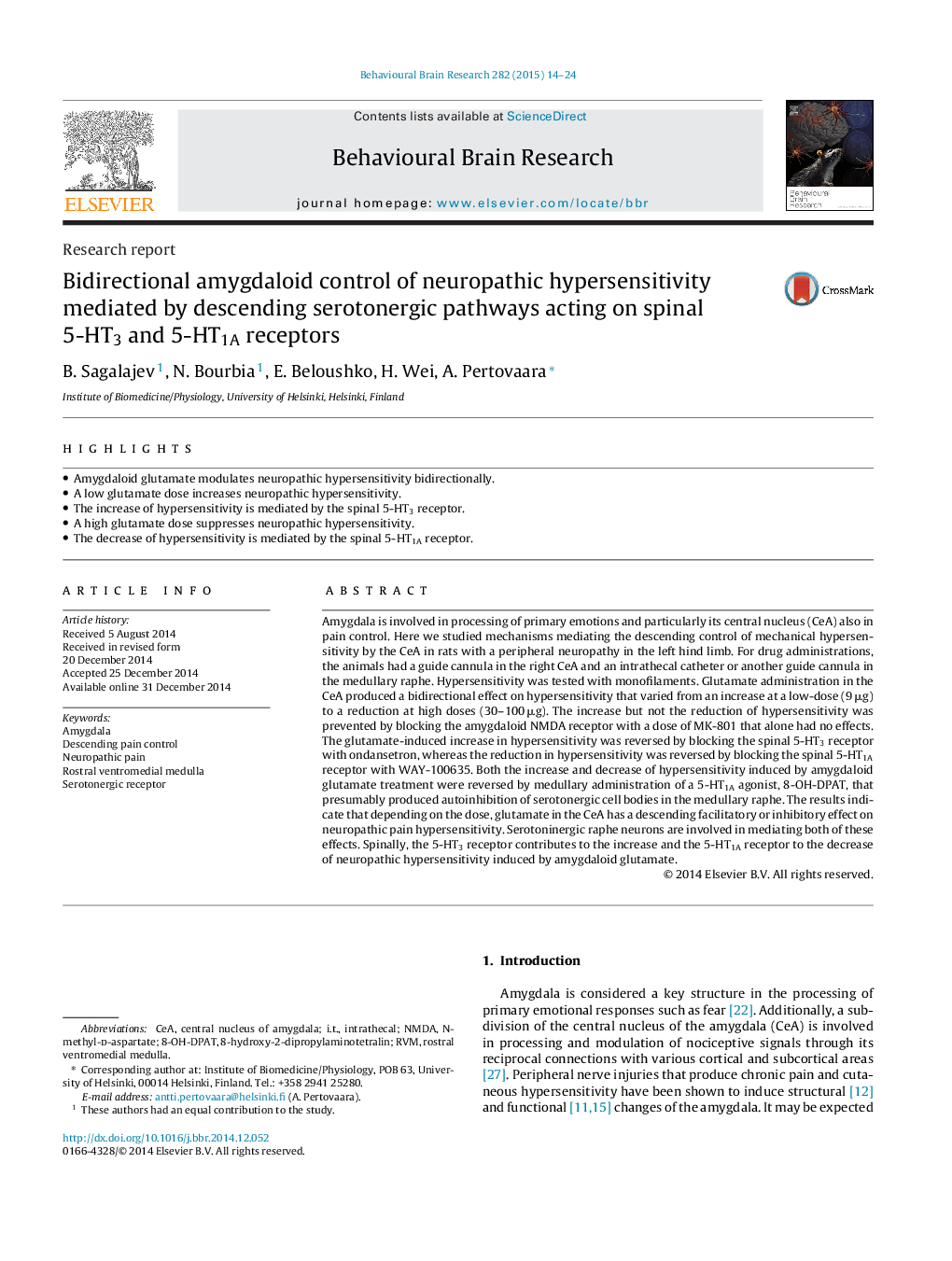| کد مقاله | کد نشریه | سال انتشار | مقاله انگلیسی | نسخه تمام متن |
|---|---|---|---|---|
| 6257248 | 1612950 | 2015 | 11 صفحه PDF | دانلود رایگان |

- Amygdaloid glutamate modulates neuropathic hypersensitivity bidirectionally.
- A low glutamate dose increases neuropathic hypersensitivity.
- The increase of hypersensitivity is mediated by the spinal 5-HT3 receptor.
- A high glutamate dose suppresses neuropathic hypersensitivity.
- The decrease of hypersensitivity is mediated by the spinal 5-HT1A receptor.
Amygdala is involved in processing of primary emotions and particularly its central nucleus (CeA) also in pain control. Here we studied mechanisms mediating the descending control of mechanical hypersensitivity by the CeA in rats with a peripheral neuropathy in the left hind limb. For drug administrations, the animals had a guide cannula in the right CeA and an intrathecal catheter or another guide cannula in the medullary raphe. Hypersensitivity was tested with monofilaments. Glutamate administration in the CeA produced a bidirectional effect on hypersensitivity that varied from an increase at a low-dose (9 μg) to a reduction at high doses (30-100 μg). The increase but not the reduction of hypersensitivity was prevented by blocking the amygdaloid NMDA receptor with a dose of MK-801 that alone had no effects. The glutamate-induced increase in hypersensitivity was reversed by blocking the spinal 5-HT3 receptor with ondansetron, whereas the reduction in hypersensitivity was reversed by blocking the spinal 5-HT1A receptor with WAY-100635. Both the increase and decrease of hypersensitivity induced by amygdaloid glutamate treatment were reversed by medullary administration of a 5-HT1A agonist, 8-OH-DPAT, that presumably produced autoinhibition of serotonergic cell bodies in the medullary raphe. The results indicate that depending on the dose, glutamate in the CeA has a descending facilitatory or inhibitory effect on neuropathic pain hypersensitivity. Serotoninergic raphe neurons are involved in mediating both of these effects. Spinally, the 5-HT3 receptor contributes to the increase and the 5-HT1A receptor to the decrease of neuropathic hypersensitivity induced by amygdaloid glutamate.
Journal: Behavioural Brain Research - Volume 282, 1 April 2015, Pages 14-24